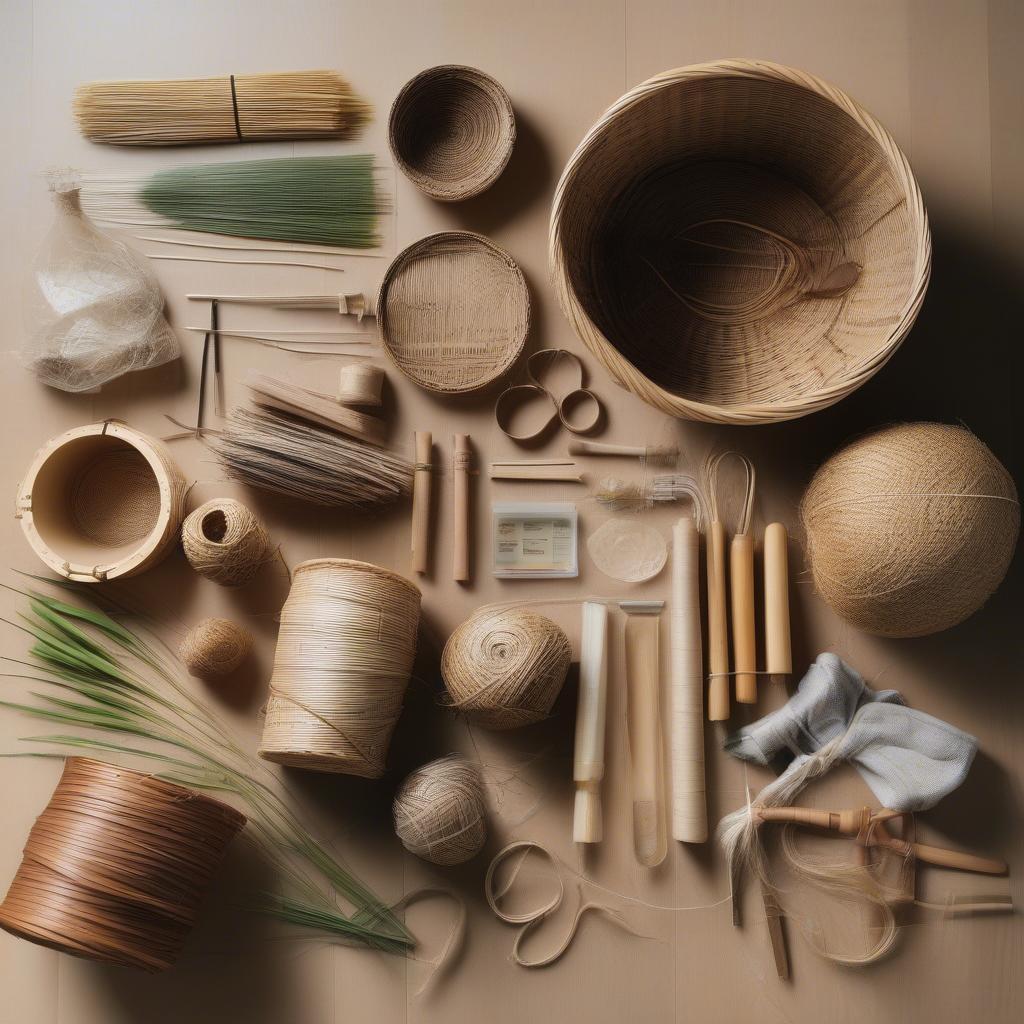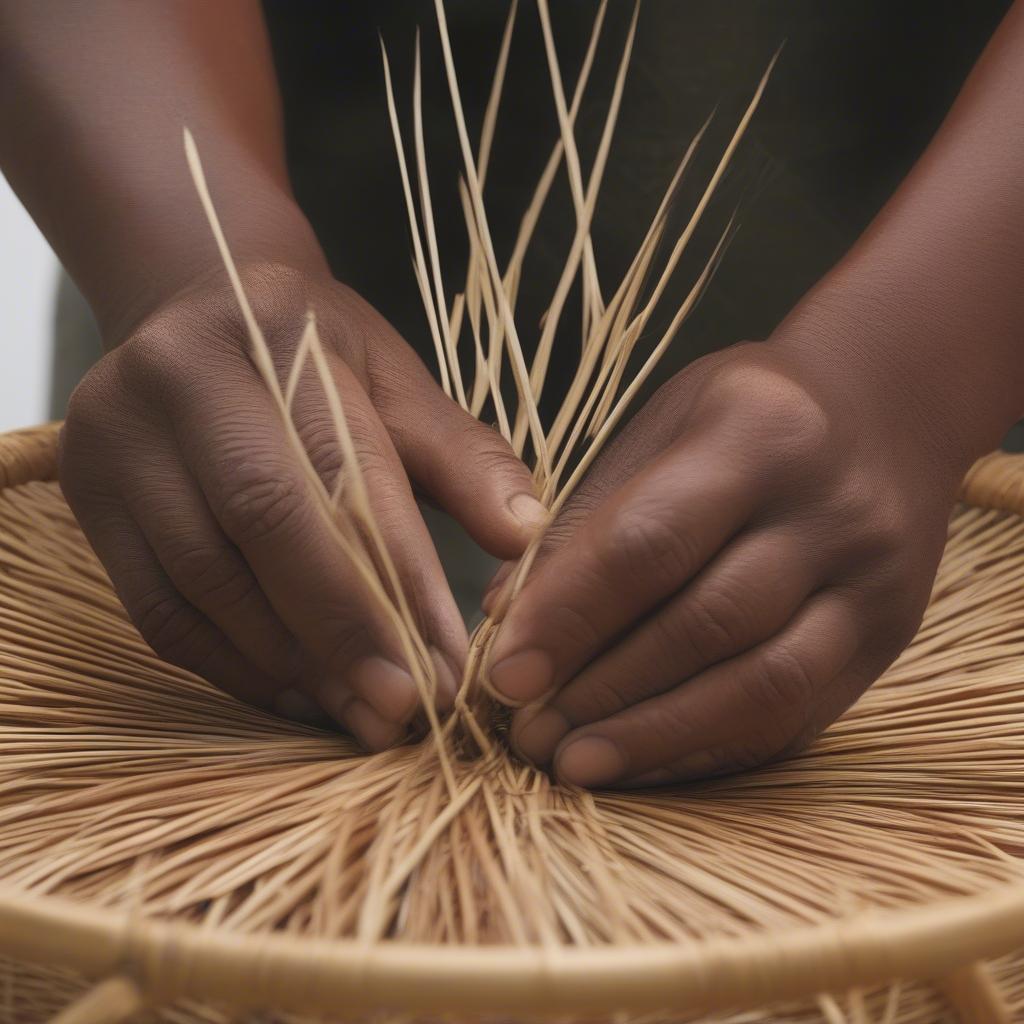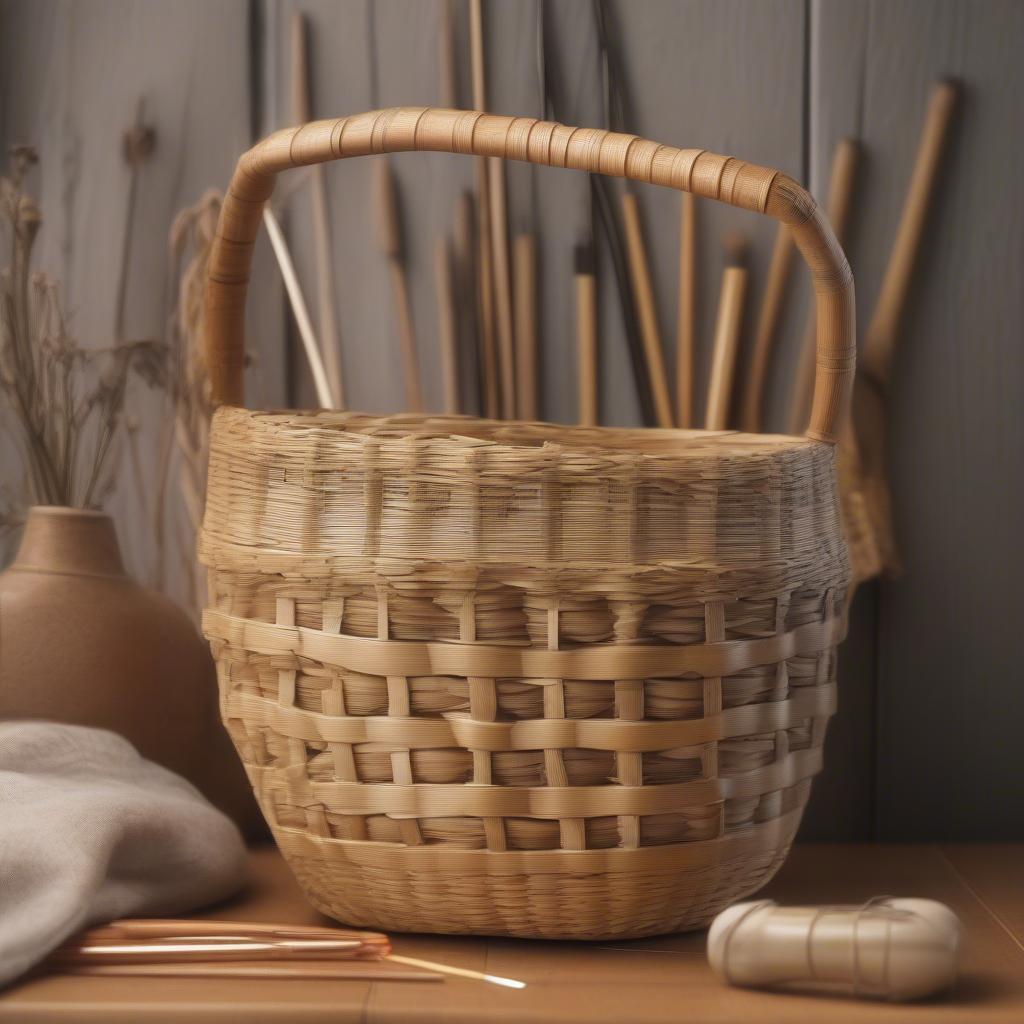Basket Weaving
How to Start Weaving a Basket
Learning How To Start Weaving A Basket opens up a world of creativity and craftsmanship. Whether you’re drawn to the rustic charm of wicker, the elegant appeal of rattan, or the versatility of other natural materials, basket weaving offers a rewarding experience. This guide provides a comprehensive introduction to the art of basket weaving, equipping you with the fundamental knowledge and techniques to embark on your basketry journey. basket weaving starter kit will provide you with all the necessary materials.
Gathering Your Basket Weaving Supplies
Before you begin your basket weaving adventure, it’s crucial to assemble the right tools and materials. Selecting quality materials will not only enhance your crafting experience but also contribute to the durability and beauty of your finished baskets.
- Weaving Materials: A variety of materials can be used for basket weaving, including reed, willow, raffia, and even recycled materials like newspaper or plastic bags. For beginners, reed is often recommended due to its pliability and ease of use.
- Base: The base of your basket provides the foundation for your weaving. You can purchase pre-made bases or create your own using techniques like coiling or plaiting.
- Soaking Container: Soaking your weaving materials makes them flexible and easier to manipulate. A large tub or bucket will suffice.
- Scissors or Pruning Shears: Essential for trimming and shaping your materials.
- Measuring Tape or Ruler: Useful for ensuring consistent weaving and achieving desired basket dimensions.
- Awl or Pointed Tool: Helps with creating holes and separating weaves.
 Essential Basket Weaving Supplies
Essential Basket Weaving Supplies
Preparing Your Weaving Materials
Proper preparation of your chosen weaving materials is paramount to successful basket weaving. This involves soaking the materials to make them pliable and prevent breakage during the weaving process.
- Soaking: Submerge your chosen weaving material (e.g., reed) in warm water for the recommended time. Soaking times vary depending on the material. Over-soaking can make the material too soft, while under-soaking can lead to brittleness.
- Draining: Once soaked, remove the material from the water and allow it to drain thoroughly. Excess water can make weaving difficult and cause the finished basket to warp.
- Wrapping: If not using immediately, wrap the damp material in a towel or plastic bag to maintain its moisture and flexibility.
Starting Your First Basket: The Weaving Process
Now for the exciting part – actually weaving your basket! Here’s a simplified approach using a pre-made base:
- Securing the Spokes: If you’re using a pre-made base, the spokes will already be in place. If not, you’ll need to create the base yourself. how to start raffia basket weaving provides detailed instructions on creating bases.
- Beginning the Weave: Choose a weaving technique, such as the basic over-under weave. This involves passing a weaver (a single strand of your weaving material) over one spoke and under the next, repeating this pattern around the base.
- Adding Rows: Continue adding rows of weaving, keeping the tension even to create a sturdy and uniform basket.
- Shaping the Basket: As you weave, you can shape the basket by gently curving the spokes inwards or outwards.
- Finishing the Rim: Once you’ve reached the desired height, finish the rim using a variety of techniques, such as a simple braid or a more decorative border.
 The Over-Under Basket Weaving Technique
The Over-Under Basket Weaving Technique
Common Basket Weaving Challenges and Solutions
Like any craft, basket weaving presents its own set of challenges. Anticipating these can save you frustration and help you achieve better results.
- Uneven Weaving: Ensure consistent tension on your weaver as you work. If necessary, undo a few rows and start again.
- Breaking Weavers: Make sure your materials are adequately soaked and keep them moist while weaving. Avoid using excessive force.
- Difficulty Shaping: Practice shaping gradually and consistently as you weave. Don’t try to force the spokes into a particular shape.
“Patience and practice are key to mastering any craft, especially basket weaving,” advises renowned basket weaver, Anya Petrova. “Don’t be discouraged by initial challenges. Embrace the process and enjoy the creative journey.”
Basket Weaving: A Timeless Craft
do not have basket weaving tips is a great resource for common problems and their solutions. Learning how to start weaving a basket connects you to a rich tradition of craftsmanship. From functional storage solutions to decorative works of art, basket weaving offers endless possibilities for creative expression. So gather your materials, embrace the process, and discover the joy of creating something beautiful with your own hands. basket weaving 101 offers more advanced techniques once you have mastered the basics.
 A Completed Woven Basket
A Completed Woven Basket
FAQs
-
What is the best material for beginners to start with? Reed is a good choice due to its flexibility and availability.
-
How long does it take to weave a basket? It depends on the size and complexity of the basket, but a simple basket can be completed in a few hours.
-
Where can I find basket weaving supplies? Craft stores, online retailers, and even some local farmers’ markets sell basket weaving materials.
-
Do I need a lot of space for basket weaving? No, a small table or even a comfortable chair is sufficient.
-
Can I use recycled materials for basket weaving? Absolutely! Newspaper, plastic bags, and fabric scraps can all be used creatively.
Basket Weaving Situations
You may encounter challenges such as loose weaves or brittle reeds. This article offers various solutions such as checking the reed’s soaking time and utilizing helpful resources like basket weaving 101 starter kit.
More resources
We have an entire section dedicated to different types of basket weaving such as Raffia basket weaving, Coiled basketry, Twining, and Plaiting.
When you need assistance, please contact us at Hanoi, Vietnam, or Tech Avenue, Suite 12, San Francisco, CA 94105, USA. Our customer support team is available 24/7.
